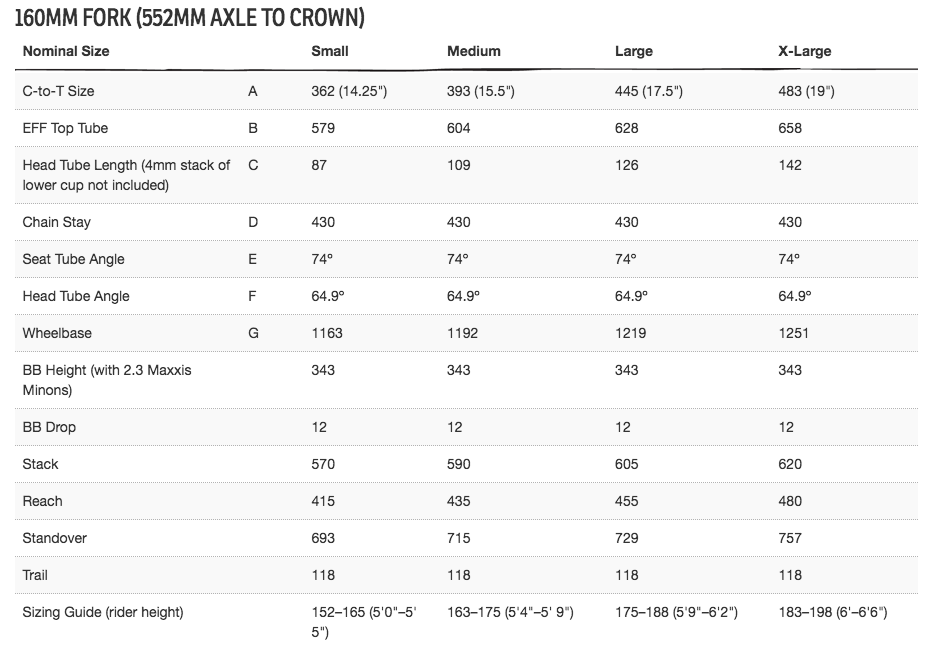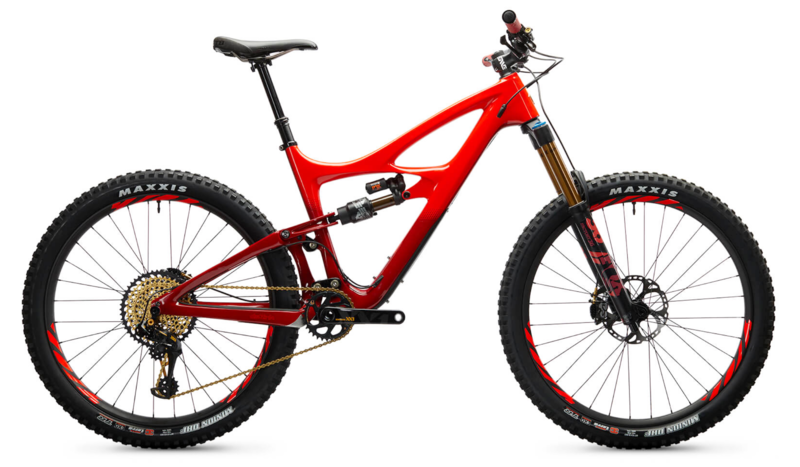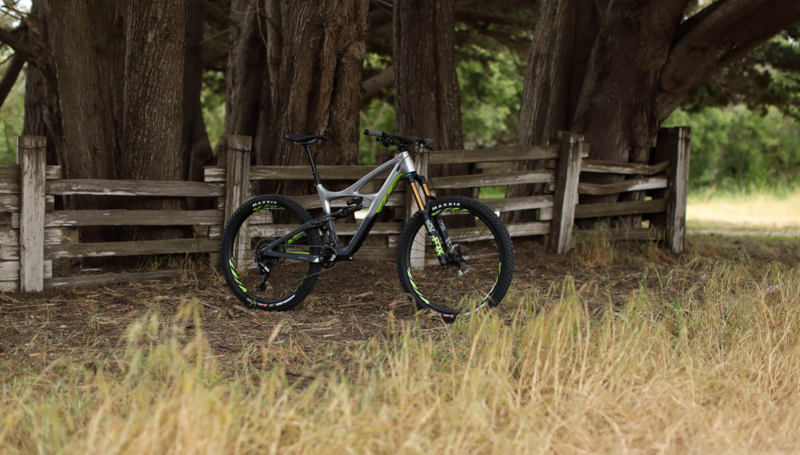Ibis Mojo HD4 Announced
 Tuesday, May 30, 2017 at 10:06AM
Tuesday, May 30, 2017 at 10:06AM The Ibis Cycles Enduro Race Team*--currently the #1 team in the Enduro World Series standings--has been giving us feedback and recommendations for the last couple of years on what they want to see in a next-generation enduro bike. Our engineers, mechanics and designers have been working with the team to realize these goals, and we are pleased to announce the 4th generation of the Mojo HD, which we're dubbing the HD4.
- The HD4 features a completely redesigned geometry with a focus on stability and speed
- You can expect excellent big hit performance through increased progression in the shock tune
- After much experimentation and real-world testing, we've landed on a 64.9 degree head tube angle
- Reach has increased across the board (up by 4mm on small, to 34mm on XL)
- Compatibility with the longest droppers
- 30% stiffer upper link, 40% stiffer lower link
- Refined carbon layup yielding greater frame stiffness overall
- Features dw-link v5 kinematics, Dave’s most efficient system to date
- 27.5" wheels, up to 2.8" tires
- Available in Fireball Red, or Añejo Silver & Lime
"The new bike is inspiring to ride. I felt like I knew what it was going to do as soon as I hopped on it for the first run. When the trail points down hill and things get steeper, the bike is easy to move around, giving me that extra bit of confidence. After testing the bike for months, I am so happy we finally get to race it because it loves to go fast!"
Features
- Accepts 27.5" tires in 2.3", 2.5", 2.6 and 2.8" Plus size
- dw-link suspension, as always
- Boost 148mm rear/110 Front axle
- 6” (153mm) of rear wheel travel
- Carbon fiber monocoque frame and swingarm
- 160mm Travel fork recommended, approved for 170mm
- Weight for the frame and shock, size large, gloss finish: 6.6 lbs (2.98 Kg)
- 64.9º head angle
- Standard Shock: Fox Float 7.875x2.25" with custom damping settings (full specs on June 13)
- Upgrade Shock: Fox Float X2, with climb switch, 7.875x2.25", rider-tunable damping settings
- ISCG 05 compatible with removable adapter is available
- Threaded bottom bracket
- Super versatile internal cable routing including internal dropper routing
- Included polycarbonate down tube cable guard
- Chain stay length: 16.9"
- 160mm post mount, 203mm maximum rotor size
- Tapered Head Tube and Steerer
- Dual row angular contact bearings on the drive side of the lower link. Large 28mm x 15mm x 7mm radial bearings on the non-drive side for stiffness and long wear
- BB height with tire sag is the same with 2.3 - 2.8 tires
Suspension technology, drivetrain performance, materials technology, carbon frame construction techniques and especially wheel and tire technology have all enjoyed tremendous technological advances in the last few years. All of us who ride have benefitted greatly. All the technologies found in the HD4 are built to currently accepted state-of-the-art standards.
Specs
- Seatpost Diameter 31.6mm
- Front Derailleur Direct Mount
- Bottom Bracket 68mm (BSA) English Thread
- Rear Shock Specification 7.875" x 2.25"
- Rear Axle 12 x 148mm BOOST
- Rear Brake 160mm Post Mount
- Chain guide compatibility ISCG 05
- Max Rear Rotor 203mm
- Headset Mixed Tapered (ZS 44 upper / ZS 56 lower)
Progessive Geometry
One of the design goals of the HD4 was to enhance the bike's handling capabilities over rough and steep terrain. The Mojo HD and Mojo 3 have had a lot of overlap and geometry similarities, with the new HD4 we are interested in separating the two bikes and growing the HD4's capabilities. We have been riding geometry testing mules for almost a year now, sampling different angles and lengths to determine the right feel for this bike. We've test ridden extensively in Santa Cruz, Downieville, Northstar, and in the high Sierras to get a feel for different terrains and traction conditions and the particular needs of each.
In dialing in the geometry, we gave ourselves free reign to figure out what would work best. Instead of choosing a geometry by committee or based on other companies' bikes, we chose our geometry based on what worked best when we rode the steepest and gnarliest trails we could find. In our testing, we were able to see what each geometry dimension actually did to help the rider. For example, by trying a number of head angles back to back to back, with all other geometry dimensions held constant, we were able to pinpoint some desirable characteristics. The obvious one is that with proper trail measurement, the bike’s ability to steamroll through rough terrain is greatly enhanced. Less intuitive, but borne out by testing is that reducing the head angle will allow the bike to achieve higher lean angles before slipping out. This change also makes the bike more stable as the trail transitions to off-camber, meaning it’s less likely to slip out or get pushed down by the trail. On the Mojo HD4 we set the head angle at 64.9 degrees to maximize the stability in off-camber sections, increase our maximum lean angle and allow us to carry great speed through the chunder.
Ibis Mojo HD4 Geometry

Reach
We have seen many consumers buying bikes that were a size larger than we anticipated, indicating that we wanted to grow the reach of the Mojo HD4 by at least that much. We rode bikes with different reach numbers and were able to find a nice balance between being long enough without going too long. Compared to the Mojo HD3, size by size we increased reach by one whole frame size then added a little more. This longer reach combined with the slacker head angle greatly increases the wheelbase and gives a very stable ride for the roughest terrain.
Droppers
Like most people who ride aggressively on their trail bikes, we have really enjoyed riding with longer and longer dropper seatposts, especially as the terrain gets rougher and steeper. We recognized that having the seat completely out of the way made all the difference when things got really hairy. So we set out to give compatibility with the longest dropper posts available today, with enough room for adjustment to fit everyone. Compared to the HD3 we lowered the tops of the seat tubes roughly one size, so that a Large frame now measures 17.5" center to top. We also ensured the internal bore of the seat tube was deep enough. This allows riders to use the longest seatpost possible and still get their correct saddle height. On the Medium, Large, and X-Large sizes, almost everyone should be able to use 170mm dropper seaposts, while 150mm dropper seatposts should work for almost all Small size owners.
DW-Link
From the suspension standpoint, we absolutely love how the current Mojo HD3 pedals. We didn't want to mess with such a dialed suspension design so we left the kinematics the same for the Mojo HD4. What we did do, is engineer more progression into the shock leverage curve, allowing for more big-hit capability in very rough terrain. The travel went up a tiny bit, and it now has 153mm of rear travel. The bike is intended to fit a piggy-back rear air shock while still fitting a 22 oz water bottle in the frame. Coil shocks are not recommended, due to the clevis shock yoke extending the eye-to-eye too far to give a good bushing overlap ratio.
Travel
We think 6” of travel is right for most people's riding needs, we felt it struck the best balance for a climbable enduro style bike. With a longer travel bike comes the temptation to put 180mm forks on them, thus requiring heavier frame construction and moving the bike into a different category.
Variable leverage rates and shock tunes can make a 6” bike feel it’s got much more travel, or it can be the other way around. Since our dw-link bikes tend not to get stuck in the middle of their travel and have a very linear feel to them, the available travel feels consistent, predictable and more usable.
Another advantage of sitting a bit higher in its travel is that we can lower the bottom bracket height, making for a better handling bike, while not being prone to pedal strikes.
Linkage
With continued refinement, we've managed to eek 30% more stiffness out of the upper link as compared to the last iteration of the HD. This upper link is backward compatible to the HD3. The HD4's lower link's stiffness is increased by 40% compared to the links on the Mojo HD3 and is unique to the HD4.
Find Out More On The Ibis Mojo HD4







Reader Comments